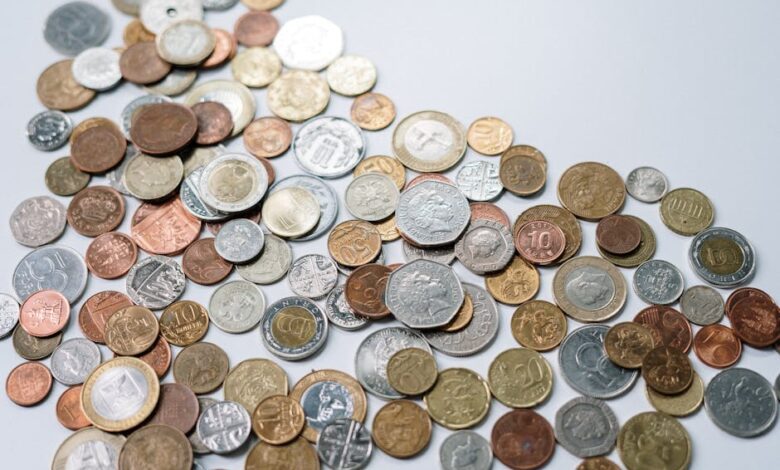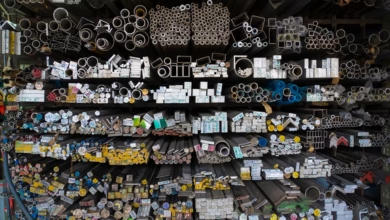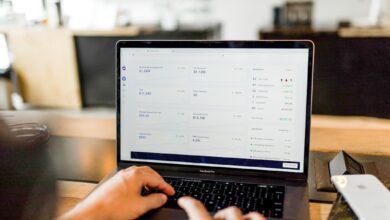Metals in Motion: Understanding the Interplay of Industry, Investment, and Economic Trends

In an increasingly interconnected global economy, metals play a pivotal role not only in industrial applications but also as strategic investment vehicles. As we navigate through the complexities of modern markets, understanding the multifaceted roles of various metals becomes essential for both investors and industry stakeholders. This article delves into the dynamic landscape of metal markets, beginning with silver, which straddles the line between a crucial industrial resource and a sought-after investment asset. We will also explore the significance of copper prices as a barometer for global economic health, the surging demand for rare earth elements driven by green technologies, and the nuanced competition between platinum and palladium as investment options. Additionally, we will examine how metals can diversify investment portfolios, the effects of inflation on metal prices, the future prospects of aluminum within a sustainable economy, and the implications of mining regulations on metal pricing. Together, these topics illuminate the vital role metals play in shaping economic landscapes and investment strategies in a rapidly evolving world.
- 1. **Navigating Metal Markets: Silver's Dual Role in Industry and Investment**
- 2. **Economic Indicators: Analyzing Copper Prices as a Reflection of Global Health**
1. **Navigating Metal Markets: Silver's Dual Role in Industry and Investment**
Silver plays a unique and multifaceted role in both industrial applications and as an investment vehicle, making it a critical metal in various markets. On the industrial side, silver is prized for its exceptional electrical conductivity, thermal conductivity, and reflectivity. These properties make it an essential component in electronics, solar panels, and various medical applications, such as antimicrobial coatings. The growing demand for green technologies, including solar energy systems, has further amplified silver's industrial significance, as these technologies require substantial silver content for optimal efficiency.
In contrast, silver also serves as a traditional store of value and investment asset. Investors often turn to silver during periods of economic uncertainty or inflation, viewing it as a hedge against currency devaluation. The metal’s dual character allows it to benefit from both industrial demand and investment interest, creating a dynamic interplay that can influence its price. For example, when industrial demand surges, it can bolster prices, attracting more investment. Conversely, in times of economic downturn, increased buying from investors seeking safety can drive prices higher, regardless of industrial demand fluctuations.
Market participants must navigate these complexities when considering silver as part of their investment strategy. Understanding the correlation between industrial demand and investment trends is crucial for making informed decisions. Additionally, geopolitical factors, currency fluctuations, and changes in mining output can all impact silver prices. Therefore, staying informed about developments in both sectors is vital for anyone looking to capitalize on silver’s potential in the metal markets.
Silver plays a dual role in both industrial applications and investment markets, making it a unique metal in the commodities landscape. In industrial settings, silver is valued for its exceptional conductivity, thermal properties, and antibacterial qualities. It is widely used in electronics, solar panels, and medical devices, among other applications. The demand for silver in these sectors has been steadily increasing, particularly with the rise of green technologies and renewable energy solutions, which often incorporate silver components for improved efficiency.
On the investment side, silver is often considered a safe-haven asset, much like gold. Investors turn to silver during periods of economic uncertainty or inflation as a hedge against currency devaluation. Its relative affordability compared to gold also attracts a broader range of investors looking to diversify their portfolios. The prices of silver can be influenced by factors such as global economic health, industrial demand, and shifts in investor sentiment.
Copper prices serve as a barometer for global economic health, heavily influenced by its extensive use in construction and manufacturing. When economies expand, demand for copper typically rises, pushing prices up. Conversely, during economic slowdowns, reduced construction activity can lead to lower copper demand and falling prices. This relationship makes copper a key indicator of economic trends.
The rise of green energy technologies has significantly impacted the demand for rare earth metals, which are essential for manufacturing batteries, magnets, and other components used in wind turbines, electric vehicles, and energy-efficient appliances. As countries transition to sustainable energy sources, the need for these metals continues to grow, creating pressure on supply chains and raising concerns about the environmental impact of mining practices.
When comparing platinum and palladium, both metals have unique characteristics that appeal to different types of investors. Platinum, often used in catalytic converters and jewelry, has seen fluctuating demand due to changes in automotive technology and market preferences. Palladium, on the other hand, has gained favor due to its critical role in gasoline engine emission control. Investors must consider market dynamics, including production levels and technological advancements, to determine which metal may offer better long-term returns.
In terms of portfolio diversification, metals can provide a hedge against inflation and currency fluctuations. As central banks implement monetary policies that may lead to inflation, investors often turn to tangible assets like metals to preserve wealth. Each metal, whether precious or industrial, carries its own risk and return profile, making it essential for investors to assess their individual strategies and risk tolerance.
Inflation directly impacts the prices of precious and industrial metals. As the cost of living rises, so does the appeal of metals as alternatives to traditional fiat currency. Additionally, increased production costs associated with mining and refining can drive metal prices higher. Understanding these dynamics is crucial for investors looking to navigate the commodity markets effectively.
Aluminum is positioned to play a vital role in a sustainable economy due to its lightweight nature and recyclability. Its use in transportation, packaging, and construction is expanding, particularly as industries seek to reduce carbon footprints. The future of aluminum will likely be shaped by advancements in recycling technologies and increasing regulatory pressures aimed at sustainability.
Finally, mining regulations significantly influence metal prices by affecting production costs and availability. Stricter regulations can lead to increased compliance costs for mining companies, potentially limiting supply and driving prices higher. Conversely, relaxed regulations may boost production but could raise concerns about environmental and social impacts. Investors must stay informed about regulatory changes in key mining regions to make educated decisions in the metal markets.
2. **Economic Indicators: Analyzing Copper Prices as a Reflection of Global Health**
Copper prices are often viewed as a barometer for global economic health due to the metal's widespread use in various industries, including construction, electronics, and transportation. As a key component in electrical wiring and plumbing, copper demand tends to rise during periods of economic expansion. Consequently, fluctuations in copper prices can indicate shifts in economic activity, consumer confidence, and industrial production.
When economies grow, infrastructure projects increase, leading to higher copper consumption. For instance, in emerging markets like China and India, rapid urbanization and industrialization drive significant demand for copper. Conversely, during economic downturns, reduced construction and manufacturing activity typically cause copper prices to decline, reflecting lower demand.
Economic indicators, such as manufacturing indices, employment rates, and GDP growth, are closely monitored by investors and analysts to gauge potential movements in copper prices. For example, a rise in the Purchasing Managers' Index (PMI) often correlates with increased copper demand, as higher manufacturing activity leads to greater use of the metal. Similarly, geopolitical events or trade policies can also impact copper prices, either bolstering or suppressing demand based on market sentiment and economic stability.
Investors often look to copper as a predictive tool for broader economic trends. Rising copper prices can signal optimism about economic recovery, while falling prices may suggest caution. Thus, understanding the dynamics of copper pricing not only provides insights into the metal's market but also serves as a reflection of the overall health of the global economy.
In conclusion, the intricate landscape of metal markets reveals a complex interplay between industrial demand and investment potential, as illustrated through the various metals discussed. Silver stands out not only for its essential role in industries ranging from electronics to renewable energy but also as a compelling investment vehicle that attracts both traditional and modern investors. Copper prices continue to serve as a vital economic barometer, reflecting the underlying health of global markets and industrial activity. Meanwhile, the surge in demand for rare earth metals driven by green energy technologies underscores the critical importance of these materials in the transition to a sustainable future.
The ongoing debate between platinum and palladium investments highlights the need for investors to consider market dynamics and individual financial goals when diversifying their portfolios. Furthermore, the impact of inflation on the prices of precious and industrial metals adds another layer of complexity, urging investors to stay informed and agile. As the world pivots towards sustainability, aluminum's role in a green economy is poised to grow, presenting new opportunities and challenges.
Lastly, the influence of mining regulations on metal prices cannot be overlooked, as policy changes can significantly affect supply chains and market stability. As we look ahead, understanding these factors will be essential for both investors and industry stakeholders seeking to navigate the evolving metal markets effectively. The interplay of these elements not only shapes investment strategies but also impacts broader economic trends, making the study of metal markets more relevant than ever.





